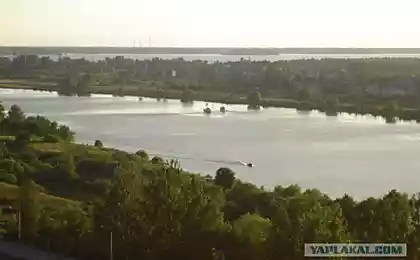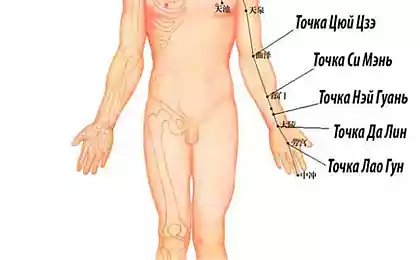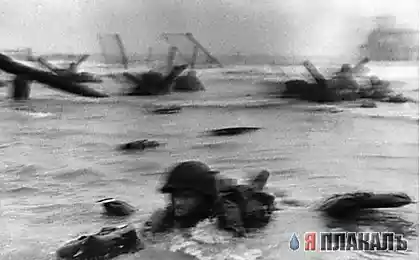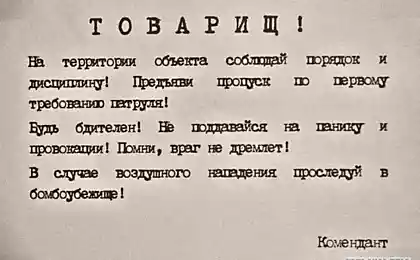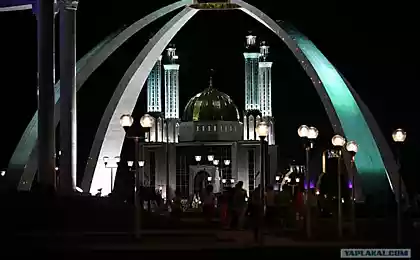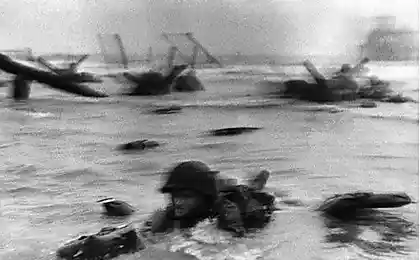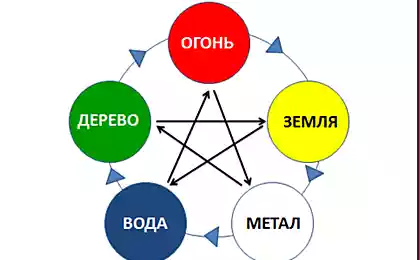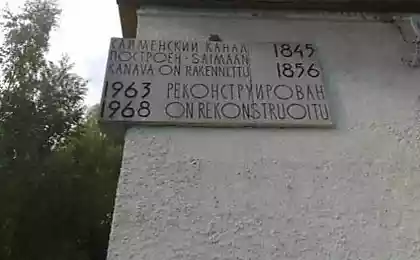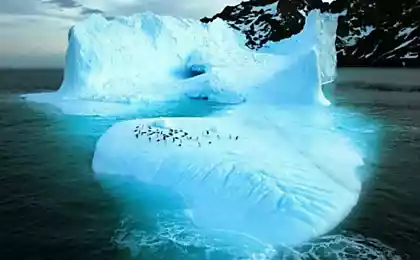1383
How the Moscow Canal (21 photos + text)
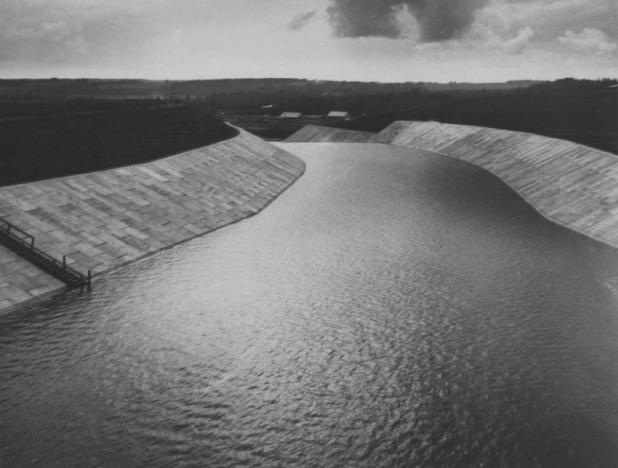
The first documented proposal to connect Moscow with the Volga River was discovered by historians in government securities times Alexei Mikhailovich. When his son Peter A. Gening engineer has developed a corresponding draft.
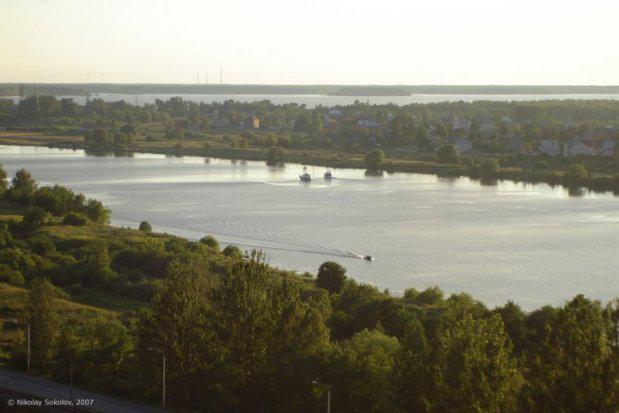
The aim was to facilitate hospital transport of goods from the Volga across the Moscow River to the north, to exclude land plots from the way Volzhan in the Baltics, the memory of which is preserved in the well-known place names and Vishny Volochyok Volokolamsk. When the project was finished, Peter A. familiarized with the estimate, said, "But!" - And the channel had to forget - for a young Russian Empire, these estimates were not yet afford.
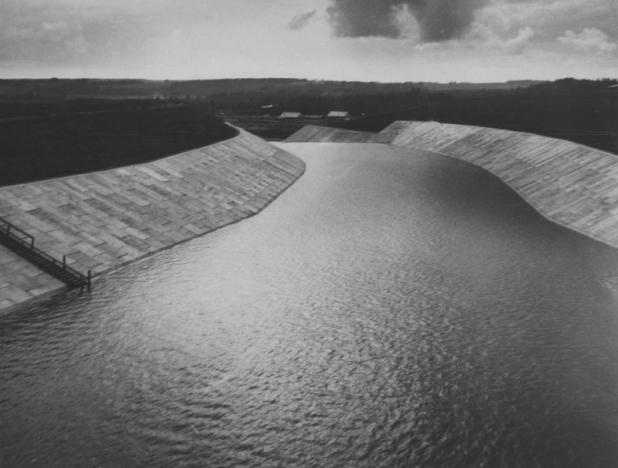
The second time the project back when Nicholas I. began digging in 1825, finished in 1850. Apparently, in those days, there was already a well-known Russian construction battalion: in the construction of the channel worked mainly soldiers of His Imperial Majesty. In 1850, we opened the channel, and a year later finished construction of the first railway St. Peterbuge - Moscow. From the very beginning of its operation, it became clear that the transport of goods by rail is much cheaper. The fate of the channel has been resolved. He lasted a total ease 10 years, gradually falling into disrepair, and in 1860 was officially closed. Investments went into the sand.
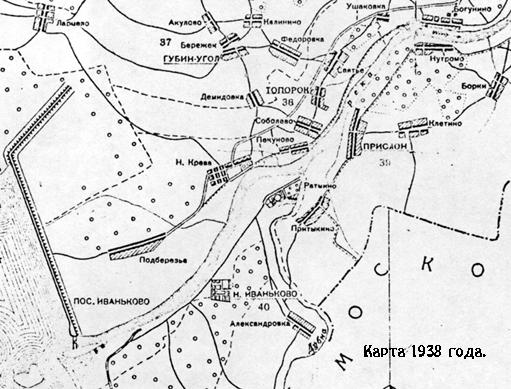
The third time, the channel spoke at the beginning of the XX century. It came to the fore the problem of water supply in Moscow; according to the calculations of experts it appeared that for the foreseeable future Muscovites drink all over Moscow River. But the beginning of World War I, it was followed by a civil, and the project had to forget again.
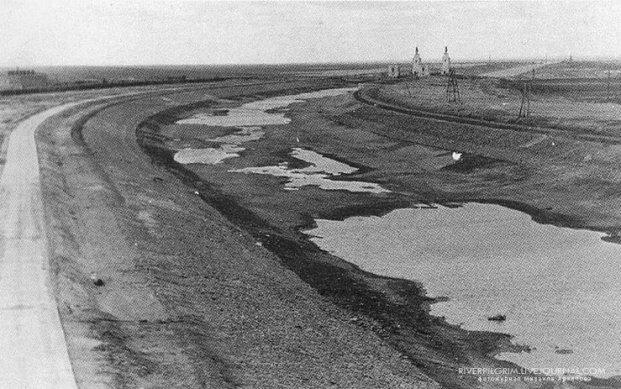
The problem of water supply of Muscovites inherited a young country of the Soviets. By the early 30s, the Bolsheviks strengthened so that felt the strength not only to drink all the water from the Moscow River, but also to return to the project and make it a reality.
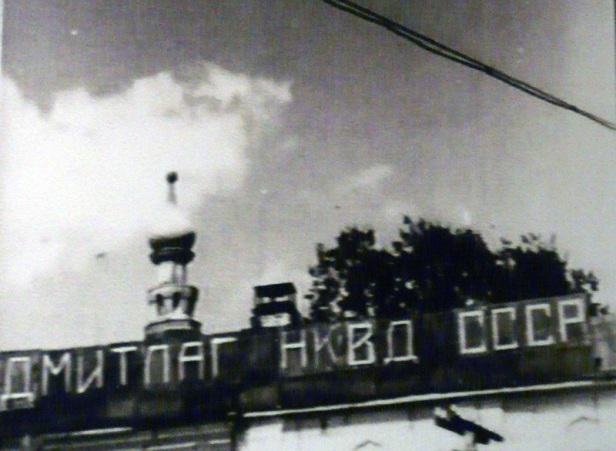
In 1931, a political decision on the construction of the Moscow-Volga canal was made. A year before the government commission appeared three options lining the channel runs and differing ways of water supply. Very attractive was a national project engineer Avdeev. Avdeev proposes to build in the area of Starica dam 40 m high Water had to go to Moscow by gravity. This method of supplying water to large cities known since ancient times, and it has proved popular ever since the Second Punic War; to recall the famous Roman aqueducts and Carthaginian. In "samotёchnogo" project, however, there were many opponents. But in this case it was enough for one. Once at the enlarged meeting of the Moscow City Party Committee Gleb Krzhizhanovsky bluntly said: "I am an enemy of any spontaneity both in the technical and in the life of the party" - the fate of the project samotёchnogo been solved.
The summer of 1932, the Council of People's Commissars as called then the government of workers and peasants, has approved a project to build a canal Dmitrov. Begins to survey and design work.
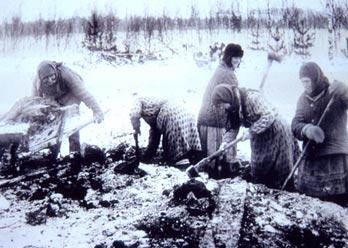
Among the prospectors were archaeologists who had to make a description of the objects that fall under the flooding and of interest to the science of history. During these works an archaeologist Bader, a graduate of Moscow State University, later doctor of historical sciences, was investigated Ratminskaya arrow.
The fact that the project Dmitrov during survey work has been adjusted. Initially, the construction of a dam across the mouth of the Volga supposed Dubna River - where the river flows into the Volga Sitmezh. At this point, according to tradition, recorded Bader, was a monastery. Vague references to it date back, according to some sources, to the XV century. The contents of the monastery was unprofitable, and in the time of Catherine II the monastery "came under sequestration," that is, quite simply, was closed. Early Member Ratmino NN Sveshnikov expressed at the time in question the existence of the monastery. In favor of the monastery still existed, demonstrated by the speech practice. Meadow in the floodplain of the river used to be called Sitmezh Renda. Perhaps it is spoiled "lease" if the monastery still was possible to assume that the monks of the monastery lands handed over to peasants in rent.
According to the original plan, the canal was to begin with Ratminskoy hands and go on the river bed of Dubna. The construction of the dam in this case would cost cheaper. But when they began to "beat the pits," found that the geological conditions do not allow. Construction of the dam was transferred to the village Ivankovo where soils are stronger, 8 km upstream: the village was just the site of the present gateway № 1. Like many other settlements, due to flooding, Ivankovo moved to a new location - the territory of the so-called "Lyubomilovskoy forest cottages. " On this occasion, Ivankovo was renamed New Ivankovo.
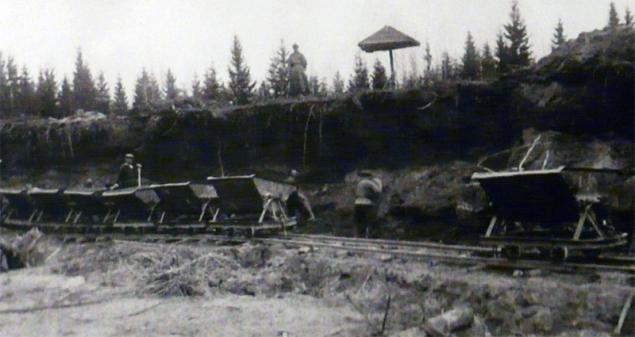
Construction of dams and sluices has generated a great number of new names. The terrain itself, deprived of patriarchal homogeneity gained contours and details. The eternal cycle of rural life broke a historic boom time.
Future hydrobuilders village called Big Volga. From the station Verbilki to the construction site of a railway line was built. The final station is also called Big Volga. The station names, "competition", "pace", "Kanalstroy & quot ;,« Shock "- by themselves add up to the slogan:" accelerated pace and the competition channel operation ". There was also a station "equipment." She was eliminated after construction. As the White Sea Canal, the Moscow-Volga Canal was built prisoners. This is no secret, proud of it. Work, especially heavy physical work, abbreviated as TFT (hence the "bullshit"), had to reforge former criminals into full-fledged citizens of the new society, builders of socialism. Exit to the construction of the canal newspaper called - "Reforging". She released prisoners themselves. Filmed propaganda films are brought proletarian writers, at the opening of the construction of a channel with speech Maxim Gorky. Thanks to our regional specialists in recent years we have become more aware of the humanitarian history channel, we saw for the continuous mass of human character, personality, the dramatic events of everyday life and the amazing destiny. Mikhail Bulanov lot of time spent in archives, collecting material bit by bit, and sometimes attacking the entire placer; he was in Moscow, he was sitting in Krasnogorsk - wherever there are archives and where you can sit. He was not interested in the date and checkout cubic meters of soil, and poured concrete cubes - it is written already pretty; he was interested in people and their destinies, and thanks to these researches we know today about the builders of the channel is much more than we did before.
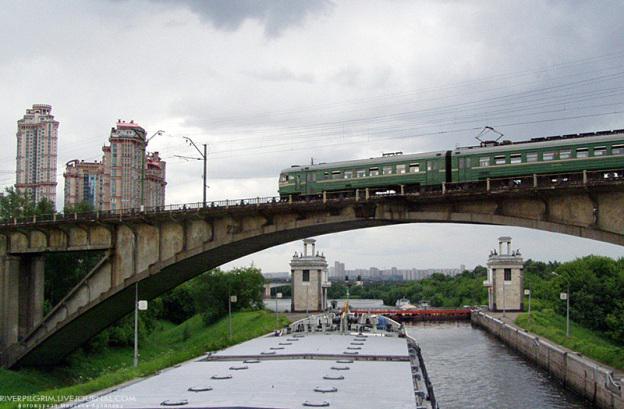
The conditions in which the workers lived, can hardly be called human. "In the dorms mud, the cold, the cracks on the walls of the dog slip, in the autumn when it rains flowed barracks ... nowhere to dry clothes, dryers, no." The works were carried out mostly manually, machinery at a construction site was not enough, and those that were, were almost all out of whack. Affected by the lack of skilled workers and professionals.
In the early summer of 1933 on the road began to appear new jobs. Every day there are more and more. Soon an army of new builders filled the road. It was unusual for workers - prisoners who Headquarter camps (Gulag) moves from the White Sea Canal, construction of which ended by this time, in Moscow, on another "construction of communism." New channel on volume of work is seven times superior Belomorstroy and Dmitlag was the largest camp in the country, through which passed more than a million prisoners. It was headed by a senior KGB Major S. Firin, and later - 3. Katznelson. Honorary construction managers were very Commissar G. Berry and the head of the Gulag M. Berman. Construction led the Kogan. That he co-authored with A. Mikoyan invented concluded sonorous name - kanalarmeytsy.
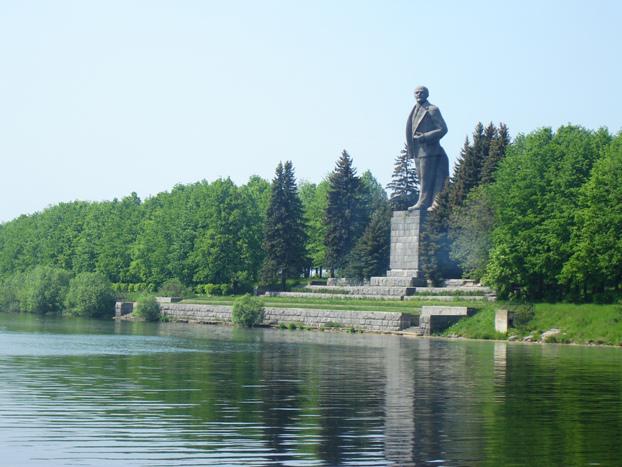
Along the route of the channel being built up numerous branches Dmitlag. One of them - Himlag, located on the banks of the river Khimki, lasted until the end of the 50s. Barracks "kanalarmeytsev" could be seen and Strogina, and Khorosheva, and Karamysheva. In what circumstances to administer one of the greatest buildings of the country, we know from the memoirs of party building Krokhina A. V .: "I often had to happen on the track channel. Technicians first time, there was virtually no huge mass of prisoners was engaged in excavations that were carried out manually - with shovels and wheelbarrows. Soil taken out beyond the edge of the channel top. In some places the soil loaded on horseback Grabarka. This heavy and exhausting labor of tens of thousands of people forced to develop and implement a set of small mechanisms that lifted the wheelbarrow from the bed of the channel on his brow. Until now, standing in front of my eyes a terrible picture: the purge to the bone chill wind throws tired gray faces prickly needles. Because ground water people have to work knee-deep in muddy dirt. Few withstand the hard labor. The dead were buried without coffins in common pits. So the Moscow-Volga Canal, as well as the White Sea Canal, was built on the bones. Only after two years in the construction were first bucket excavators Kovrov plant, which is also included in the GULAG ».
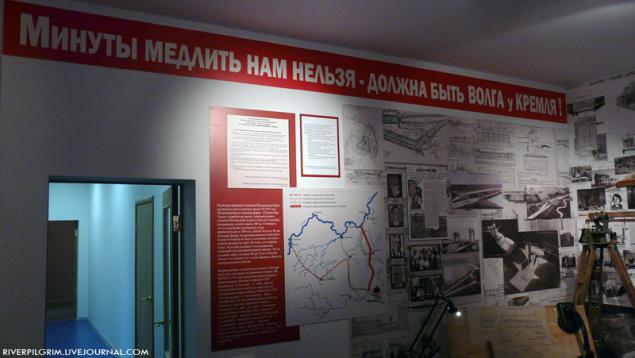
These excavators arrived at the "deep" notch near the village of Khlebnikov. For the first time in the construction of large mechanized unfolded. In 1934 appeared excavator Lubeck E-1. He was brought from abroad, but without blueprints and instructions. Harness it had blindly ... Excavator park on the canal was completely mastered only by the summer of 1936, but then there were about 200 excavators - more than any other building peace.
The soil excavated by excavators, loaded on the railway platform, which by means of steam locomotives were taken away out of the canal. For unloading soil from platforms slurry was applied - pressure water jet ejected from a water cannon - jetting. Such a method has been proposed as an engineer ND Kholin. Since 1935, on the construction of the canal has become a widely used hydromechanization, ie soil erosion, transport it and alluvium embankments with water under pressure. Only Khoroshevskoye rectification bend of the Moscow River by jetting a million cubic meters of soil removed. By the end of the construction of mechanized labor is almost entirely replaced manual.
Hard gateways were building the southern slope of the channel. Pit under the 7th Gateway depth of 25 meters to come off in water-saturated silt. The method of freezing the soil at the construction site has not been used. Heavy excavators working for the rail-mounted, sometimes sucked along with the rails. Road-plank for excavators could not stand for a long time and also went into the liquefied ground. It was necessary to lay 4-5 m thick concrete at the bottom of future gateways; for its production it was built a concrete plant. Transporters in the insulated concrete galleries served to the site distribution and the prisoners - kanalarmeytsy hand in wheelbarrows along narrow planks transported it to the pits.
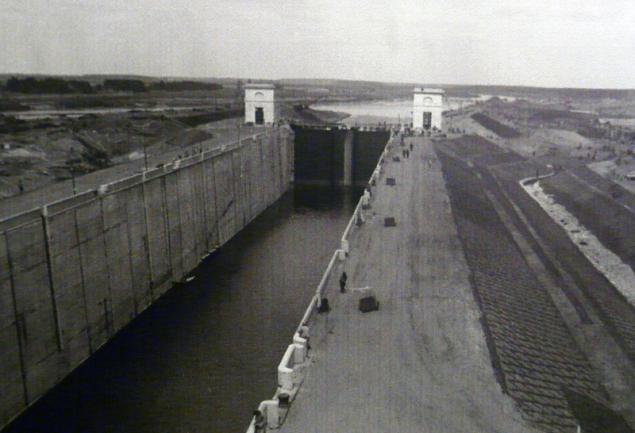
The area between the 7th and 8th channel gateways trail crossed the railway Kalinin (now Riga) direction, and the railway line was put on the same level with the bottom of the channel. It was necessary to either raise the road above the channel, or move it to a new location. Implementation of the first option would require reconstruction of the railway line over a large area, and the station Tushino would raise to 10 meters. It was therefore decided to cross the canal bridge over the lower chamber of the 8th gateway. However, the bridge had to have a very large span - 130 meters.
This challenge has decided Alexander S. Bachelis - a young talented engineer, a graduate of the Kiev Polytechnic Institute. By the time he was already the author of several projects of large bridges, erected on major projects of the Union: Magnet-down, Tagilstroya, Kuznetsk, Azovstal and others. "In 1935, I was offered the project of arch concrete bridge over the 8th Gateway Moscow-Volga Canal Kalinin under the railway, which is so far the largest Clearance arched concrete bridge in the Soviet Union and one of the few in the world.
Bridge ... Old-timers told Strogina how fast and frightening was this building. Not far from the Strogino floodplain and planned embankment lined up dozens of huts. It was a "zone". Prisoners - newcomers and old-timers - the builders here-fitting with White-moro-Baltic channel, ready for new challenges. People remember how the labor cost low riverine shore to work on the migration route of the railway, for which was built a huge three-kilometer embankment, reaching 22 meters in height, hundreds of horse breeders from morning till night, drove up and down their favorites, tamping the soil, gravel and crushed stone.
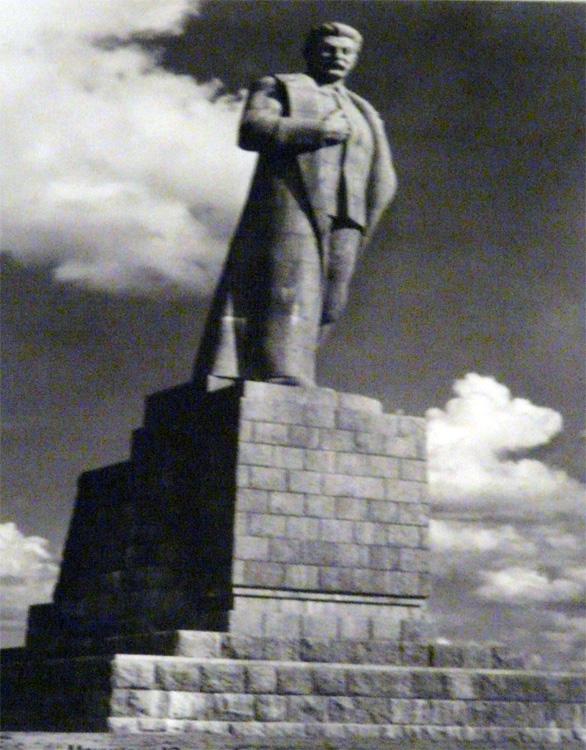
At the end of the plan was the construction of the bridge is scheduled for September 1936 (and started on July 1 1935) "In order to master all the work by the deadline, - writes A. Bachelis in the newspaper" Moscow Volgostroy "18 August 1936 - had immediately take the extremely high rates. It should be noted that the entire team of employees, to construct the bridge, felt the full responsibility of its task ... In this respect, our team, although a few, has fully justified itself. On the bridge worked: senior engineer comrade. Maximov, senior foreman formwork comrade. Tikhomirov, foreman of reinforcing the work of Comrade. Sverdlov, Senior Surveyor comrade. Korf and the head of the EMB comrade. Ivanov. At the right moment each of them forgot their "ranks" and positions and getting to the job site where it was needed. Many people helped us with the chief of the construction on the challenge of Comrade Kalinin railroad. Rubinstein ».
And construction of the bridge is completed in record time - just 13 months. The day of the technical tests of the bridge. "According to him both were fired four heavy locomotive with American platforms, loaded with stone. The bridge had passed the test! On the way the ship sent from Moscow, this is the first structure that passengers will see the channel "- enthusiastically wrote" News "July 29, 1936 A" Working Moscow "on the same day adds:" On August the bridge is expected to open for operation. Following this train of Kalinin railway to three-kilometer route between Tushin and Pokrovsky-Streshnevo go on the new highway. This track is ready. It finished laying rails. Manufactured last finishing works and landscaping path ».
August 5, 1936 the newspaper "Moscow Volgostroy" under the heading "Lightning" printed the following message: "The new bridge opened to traffic." "On August 4, 8:00 pm open 5 minutes for the construction of passenger traffic allotment Kalinin railway section Pokrovskoye-Streshnevo - Tushino and new railway bridge through the gateway N424 N8. In the evening, the bridge passed 3 passenger trains passed satisfactorily. We started the dismantling of the old fabric. Head of the Southern District Kuznetsov. The chief work area Campfires »
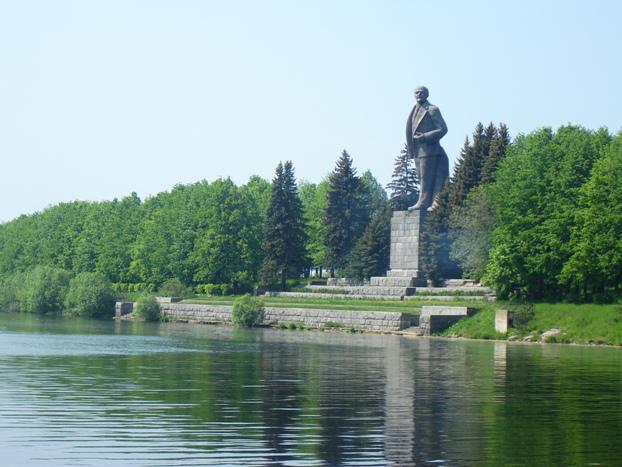
In the early spring of 1937 construction of the canal was completed: cut hills, reclaimed the high dam, erected concrete boxes gateways. At the end of April 1937 the Volga canal was filled with water. It happened so quickly that the builders did not have time to clean cars, Grabarka. I had to arrange trawling channel to raise all of the water. May 1, 1937 from the city of Gorky (Nizhny Novgorod) entered the flotilla of ships of four ships - "Joseph Stalin", "Vyacheslav Molotov", "Mikhail Kalinin" and "Klim Voroshilov". She has headed up the river to the source channel. The flotilla was the first to pass under the new waterway from the Volga to the capital. May 2, 1937 a fleet of ships and boats passed a ready channel of the Volga to Moscow and stood at the Kremlin walls. And during the spring flood in 1937 it began filling the reservoir Ivankovskoye.
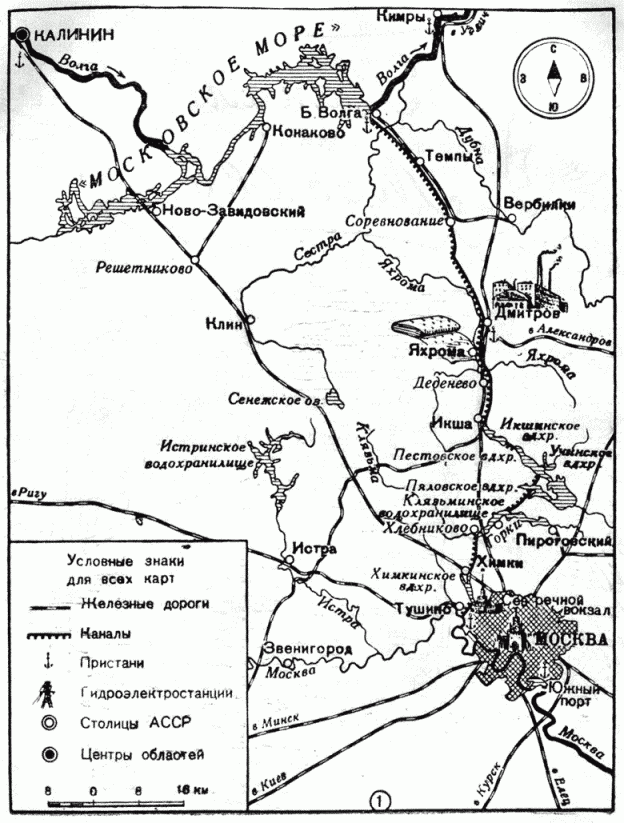
With the filling of the reservoir of local geography changed radically. Forests, villages, villages, cemeteries and other geographic detail to the west of the left bank tucked under water. No more Glinnikov river that flowed near the village Ivankovo: the village was moved and forgot the river, and for what reason, but in the end we lost an entire place-name. The same fate befell Lipenkov river, a tributary of the Volga in the neighborhood of this island Lipnya.
More than 100 villages and towns Korcheva whole or in part have been moved to new locations. Roman Worlds, one of those who carried out the journalistic support canal construction, says: "The whole year in Korcheva thundering explosions, collapsed the church, the old stone house merchants. All summer 1936 sailed down the Volga from Korcheva Konakovo barges, laden with stone, brick homes ... dismantled relocated the whole town. "
- midnight.nnm.ru
